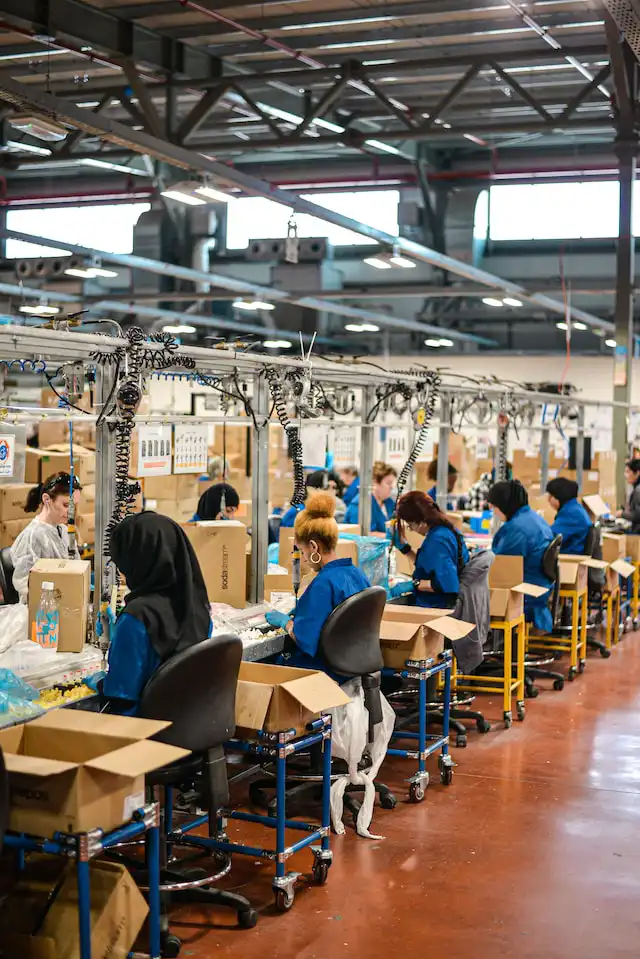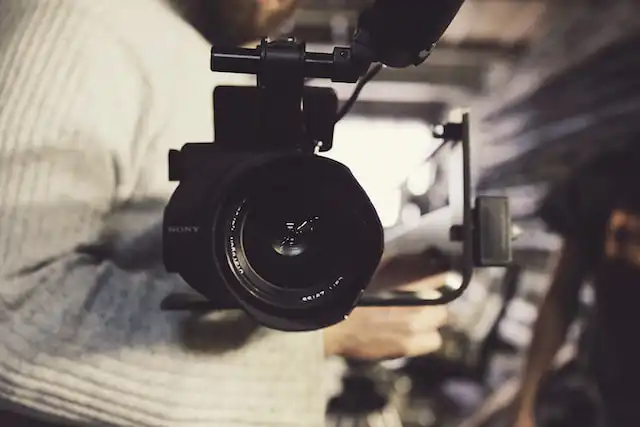
Asia Pacific Athletic Apparel and Footwear Market Outlook to 2019
Surging Growth with Online Marketplaces
Region:Asia
Product Code:KR324
June 2015
232
About the Report
The Report titled “Asia Pacific Athletic Apparel and Footwear Market Outlook to 2019 – Surging Growth with Online Marketplaces” provides an in-depth analysis of the Asia Pacific athletic apparel and footwear market and major countries such as Japan, China, Australia and India. The report covers specific insights on the market size in terms of value and volume, segmentation by geography, by online/ offline sales and athletic apparel, footwear product wise (Cross Training shoes, running and jogging shoes, basketball shoes, skating shoes, indoor sportswear, training wear, golf wear, outdoor wear, soccer wear, lifestyle wear, baseball wear, tennis wear, fitness wear and others) segmentation by major countries, recent trends and developments and future outlook of the athletic apparel and footwear market in region.
Asia Pacific
The market in Asia-Pacific region has showcased a persistent trajectory of growth over the period 2009-2014. This was due to an increase in the purchasing power of the people and higher household budget allocation on athletic apparel and footwear as a result of the sound economic condition and better employment opportunities in the region. Additionally, mounting consumer confidence in the sports apparel and footwear industry has driven the market in the region. In a nutshell, the athletic apparel and footwear market in Asia Pacific region has grown from USD ~ million in 2009 to USD ~million during 2014 in value terms, at a CAGR of 13% during the period. The revenues of the athletic apparel and footwear industry in the Asia Pacific region are expected to grow from USD ~ million in 2014 to ~ million during 2019. This market is envisaged to apprehend at a considerable CAGR growth rate of 16.3% during the period 2015-2019. In more developed markets of the Asia-Pacific region, including countries such as China, India and Australia the offerings from the market players are expected to be diverse, focused mainly on customized demands. Additionally, the market is predicted to witness expansion in terms of the newer technologies, coupled with newer fashion trends.
China
The structure of Chinese sportswear industry has changed overtime in terms of the business model and distribution platform. The growth of the overall GDP in the country, rising income levels and shift in consumption preferences of increasingly affluent consumers has stimulated the demand for sportswear in the country. A combination factors such as governmental support and promotion of sporting programs for the public, hosting of international sports events; increasing media exposure and rapid development of the economy have been the key drivers to sustain double digit growth for China’s sportswear market during the period of 2009-2014. The overall market revenues of China athletic apparel and footwear market have enhanced at a substantial CAGR of 18.4% during the review period, with revenues being registered at USD ~ million during 2014. Sportswear in China has been primarily dominated by the athletic apparel, which commanded a major share of ~% in the overall revenues of the athletic apparel and footwear market during 2014. The athletic apparel and footwear market of China in the future is envisaged to augment at the CAGR of 21.5% during 2015-2019, with revenues are expected to reach about USD ~ billion by 2019.
Japan
The athletic wear market in Japan has observed a weak growth over the timeframe 2009-2014. The slow growth of the overall GDP in the country, rising inflation, occurrence of catastrophic events such as the tsunami, earthquakes and nuclear disasters have adversely affected the growth of the market. The athletic apparel and footwear market of Japan has registered a CAGR of 1.7% during 2009-2014 and elevated revenues from USD ~ million in 2009 to USD ~ million in 2014. The market for athletic apparel in Japan is majorly dominated by local players including Descente, Goldwin, Mizuno, Asics and others. The market in 2014 was led by the domestic player Descente with share of ~% in total athletic apparel market. Japan athletic apparel and footwear market is likely to augment at a positive yet slow CAGR of 1.9% during 2015-2019 with the impact of rising health consciousness due to a running boom, changing consumer preferences, evolving distribution channels and rapid online migration.
Australia
The Australian sportswear market witnessed downfall in 2010 and 2011, however experienced rapid growth, particularly over the last two years due to the amplified desire for participation in sports and fitness activities among the masses. The athletic apparel and footwear market in Australia recorded revenues of USD ~ million in 2009 and reached a figure of USD ~ million by the end of 2014, witnessing a CAGR of 1.7%. The Australian Athletic Apparel and Footwear market is competitive and well serviced by domestic players. The market is characterized by severe competition due to which leading companies compete on the basis of prices. The prospect of the athletic footwear market in Australia seems to be favorable as the preference for a healthy lifestyle gains continuous momentum amongst the population of Australia. Further, the sporting events to be held in the near future will continue to impel the demand for athletic apparels and footwear in Australia. The athletic apparel and footwear market in Australia is expected to reach USD ~ billion in 2019 as compared to USD ~ million in 2015, thereby growing at a CAGR of 10.7% from 2015-2019.
India
The athletic apparel and footwear industry in India has witnessed phenomenal growth over the past seven years and has occupied a place of prominence in the Indian economy in terms of its massive potential for employment generation and export. India athletic apparel and footwear market has considerably enhanced at a healthy CAGR of 27.7% during the period 2009-2014. Several factors, including a thriving middle-class population, a paradigm shift in consumers’ attitude to health and fitness, an increase in the number of sports events and the growth of organized retail are anticipated to drive the market in the coming years. The athletic apparel and footwear market revenues in the future are expected to augment at the CAGR of ~% during 2015-2019, reaching revenue to USD ~ billion in 2019.
Key Topics Covered in the Report:
- The market size of Asia Pacific athletic apparel and footwear market in terms of revenue.
- Asian market segmentation by geographies covering China, Japan, Australia and India
- Competitive Landscape of Major players operating in Asia Pacific athletic apparel and footwear market.
- Future outlook and projections of athletic apparel and footwear market in Asia Pacific region.
- China athletic apparel and footwear market size, segmentation, entry barriers, SWOT Analysis, trends and developments, market share of major companies in the industry.
- Japan athletic apparel and footwear market size, segmentation, entry barriers, SWOT analysis, market share of major companies in the industry.
- Australia athletic apparel and footwear market size, segmentation, trends and developments, SWOT analysis, competitive landscape of major companies in the industry.
- India athletic apparel and footwear market size, segmentation, trends and developments, SWOT Analysis, market share of major companies in the industry.
Products
Athletic Apparel, Athletic Footwear, Cross Training shoes, running and jogging shoes, basketball shoes, skating shoes, indoor sportswear, training wea
Companies
Nike, Adidas Group, Puma S.E, Anta Sports Products Limited, Li-Ning, 361 Degrees International, Xtep International Ltd., Kappa, Asics, Mizuno, Descente, Goldwin Inc., Rebel Sports Limited, Amart All Sports, Lorna Jane, Bata, Liberty Shoes Limited, Action
Table of Contents
1. Asia-Pacific Athletic Apparel and Footwear Industry Introduction
1.1. Asia-Pacific Athletic Apparel and Footwear Market Size, 2009-2014
1.1.1. By Athletic Apparel and Footwear Market, 2009-2014
1.1.2. By Athletic Apparel Market, 2009-2014
1.1.3. By Athletic Footwear Market, 2009-2014
2. Asia-Pacific Athletic Apparel and Footwear Market Segmentation, 2009-2014
2.1. By Athletic Apparel and Footwear, 2009-2014
2.2. By Geography, 2009-2014
3. Major International Players in Asia-Pacific Athletic Apparel and Footwear Market
3.1. NIKE, Inc.
3.1.1. Company Overview
3.1.2. Business Strategies
3.1.3. Financial Performance, FY’2009-FY’2014
3.2. Adidas Group
3.2.1. Company Overview
3.2.2. Business Strategies
3.2.3. Financial Performance, 2009-2014
3.3. PUMA S.E
3.3.1. Company Overview
3.3.2. Business Strategy
3.3.3. Financial Performance, 2009-2014
4. Asia-Pacific Athletic Apparel and Footwear Industry: Trends and Developments
Burgeoning Online Market for Sports Apparel and Footwear
International Brands Seeking Entry into Asian Market
5. Asia-Pacific Athletic Apparel and Footwear Market Future Outlook and Projections, 2015-2019
5.1. By Athletic Apparel and Footwear, 2015-2019
5.2. By Geography, 2015-2019
5.3. Cause and Effect Relationship between Industry Factors and the Asia-Pacific Athletic Apparel and Footwear Market Prospects
6. Analyst Recommendations
Augmenting Variables in the Asia Pacific Athletic Apparel and Footwear Market
Impacting Negative Variables in Asia Athletic Apparel and Footwear Market
6.1. Opportunities
6.1.1. Rising Population
6.1.2. Rapid Growth in E-commerce Market
6.2. Pre-requisites
6.2.1. Differentiated Product
7. China Athletic Apparel and Footwear Market Introduction
7.1. China Athletic Apparel and Footwear Market Size, 2009-2014
7.2. China Athletic Apparel and Footwear Market Segmentation
7.2.1. By Athletic Apparel and Footwear, 2009-2014
7.2.1.1. By Athletic Apparel, 2009-2014
Athletic Apparel by Gender, 2014
7.2.1.2. By Athletic Footwear, 2009-2014
Athletic Footwear by Product Categories, 2014
Athletic Footwear by Gender, 2014
7.2.2. China Indoor Athletic Wear Market
7.2.2.1. Indoor Athletic Wear Market Size, 2009-2014
7.2.2.2. Indoor Athletic Wear Market Segmentation, 2009- 2014
7.3. China Athletic Apparel and Footwear Market Entry Barriers
7.4. China Athletic Apparel and Footwear Market: SWOT Analysis
7.5. China Athletic Apparel and Footwear Industry: Trends and Developments
Increasing Sports Participation
The Post Olympics Effect: Leading to a Slowdown in Demand
Emerging Fashion Trends in Sports Industry
Increasing Contribution of Women and Kids in Sportswear Sales
7.6. Market Share of Major Players in China Athletic Wear Market, 2014
7.6.1. By Athletic Apparel, 2014
7.6.2. By Athletic Footwear, 2014
7.7. Company Profiles of Major Domestic Players in China Athletic Apparel and Footwear Market
7.7.1. Anta Sports Products Limited.
7.7.1.1. Company Overview
7.7.1.2. Business Strategies
7.7.1.3. Financial Performance, 2009-2014
7.7.2. Li-Ning
7.7.2.1. Company Overview
7.7.2.2. Business Strategies
7.7.2.3. Financial Performance, 2009-2014
7.7.3. 361 Degrees International Limited
7.7.3.1. Company Overview
7.7.3.2. Business Strategies
7.7.3.3. Financial Performance, 2011-2014
7.7.4. Xtep International Ltd.
7.7.4.1. Company Overview
7.7.4.2. Business Strategies
7.7.4.3. Financial Performance, 2009-2014
7.7.5. Kappa
7.7.5.1. Company Overview
7.7.5.2. Business Strategies
7.7.5.3. Financial Performance, 2009-2014
7.8. Macro-Economic Factors of China Athletic Apparel and Footwear Industry, 2009-2019
7.8.1. Population, 2009-2019
7.8.2. Per Capita Annual Consumption Expenditure on Clothing, 2009-2019
7.8.3. Per Capita Income of Households, 2009-2019
7.8.4. Import of Athletic Footwear in China, 2009-2019
7.8.5. Export of Athletic Footwear from China, 2009-2019
7.9. China Athletic Apparel and Footwear Market Future Outlook and Projections, 2015-2019
7.9.1. By Segmentation, 2015-2019
8. Japan Athletic Apparel and Footwear Industry Introduction
8.1. Japan Athletic Apparel and Footwear Market Size, 2009-2014
8.2. Japan Athletic Apparel and Footwear Market Segmentation
8.2.1. By Athletic Apparel Market, 2009-2014
By Value, 2009-2014
By Volume, 2009-2014
8.2.1.1. By Product Categories, 2009-2014
8.2.2. By Woven Category, 2009-2014
8.2.2.1. By Gender, 2009-2014
8.2.2.2. By Knit Category, 2009-2014
8.2.3. By Athletic Footwear Market, 2009-2014
By Value, 2009-2014
By Volume, 2009-2014
8.2.3.1. By Product Category on the Basis of Revenue, 2009-2014
8.2.3.2. By Product Category on the Basis of Volume Sales, 2009-2014
8.2.4. By Online and Offline Sales by Value, 2014
8.2.5. By Organized and Unorganized Players, 2014
8.3. Japan Athletic Apparel and Footwear Market: SWOT Analysis
8.4. Market Share of Major Players in Japan Athletic Apparel and Footwear Market, 2014
8.4.1. By Athletic Apparel, 2014
8.4.2. By Athletic Footwear, 2014
8.5. Company Profiles of Major Domestic Players in Japan Athletic Apparel and Footwear Market
8.5.1. Asics
8.5.1.1. Company Overview
8.5.1.2. Business Strategies
8.5.1.3. Financial Performance, 2009-2014
8.5.2. Mizuno
8.5.2.1. Company Overview
8.5.2.2. Business Strategies
8.5.2.3. Financial Performance, 2009-2014
8.5.3. Descente
8.5.3.1. Company Overview
8.5.3.2. Business Strategies
8.5.4. Goldwin Inc.
8.5.4.1. Company Overview
8.5.4.2. Business Strategies
8.6. Japan Athletic Apparel and Footwear Industry: Trends and Developments
Innovative Marketing Strategies
Development of New Products
Expansion of Fitness Clubs and Programs
Celebrity Endorsements
Growth of E-commerce
Targeting Women Consumers
8.7. Japan Athletic Apparel and Footwear Market Entry Barriers
8.8. Japan Athletic Apparel and Footwear Market Future Outlook and Projections, 2015-2019
8.8.1. By Segmentation, 2015-2019
8.9. Macro Economic Factors of Japan Athletic Apparel and Footwear Industry, 2009-2019
8.9.1. Population, 2009-2019
8.9.2. Consumer Expenditure on Clothing and Footwear, 2009-2019
8.9.3. Gross Domestic Product, 2009-2019
8.9.4. Import of Athletic Footwear in Japan, 2009-2019
8.9.5. Export of Athletic Footwear from Japan, 2009-2019
9. Australia Athletic Apparel and Footwear Industry Introduction
9.1. Australia Athletic Apparel and Footwear Market Size, 2009-2014
9.2. Australia Athletic Apparel and Footwear Market Segmentation
9.2.1. By Athletic Apparel Market, 2009-2014
9.2.1.1. By Gender, 2014
9.2.2. By Athletic Footwear Market, 2009-2014
9.2.2.1. By Product Categories, 2014
9.3. Market Share of Major Distribution Channels in Australia Athletic Apparel and Footwear Industry, 2014
9.3.1. By Athletic Apparel, 2014
9.3.2. By Athletic Footwear, 2014
9.4. Competitive Landscape of Major Domestic Retailers in Australia Athletic Apparel and Footwear Industry
9.5. Australia Athletic Apparel and Footwear Market: SWOT Analysis
9.6. Australia Athletic Apparel and Footwear Industry: Trends and Developments
Intensified Sporting Activities
Growth of Sales through E-commerce
Australia's Ageing Population
Growing Sports Sponsorship
9.7. Australia Athletic Apparel and Footwear Market Future Outlook and Projections, 2015-2019
9.7.1. By Segmentation, 2015-2019
9.8. Macro Economic Factors of Australia Athletic Apparel and Footwear Industry, 2009-2019
9.8.1. Population, 2009-2019
9.8.2. Consumer Expenditure on Clothing and Footwear, 2009-2019
9.8.3. Import of Athletic Footwear in Australia, 2009-2019
9.8.4. Export of Athletic Footwear from Australia, 2009-2019
10. India Athletic Apparel and Footwear Industry Introduction
10.1. India Athletic Apparel and Footwear Market Size by Revenue, 2009-2014
10.2. India Athletic Apparel and Footwear Market Segmentation
10.2.1. By Athletic Apparel Market, 2009-2014
10.2.1.1. Athletic Apparel by Gender, 2014
10.2.2. By Athletic Footwear Market, 2009-2014
10.2.2.1. Athletic Footwear by Gender, 2014
10.2.2.2. Athletic Footwear by Product Categories, 2014
10.3. India Athletic Apparel and Footwear Market Entry Barriers
10.4. India Athletic Apparel and Footwear Market: SWOT Analysis
10.5. Market Share of Major Players in India Athletic Apparel and Footwear Market, 2014
10.6. Company Profiles of Major Domestic Players in India Athletic Apparel and Footwear Market
10.6.1. Bata India
10.6.1.1. Company Overview
10.6.1.2. Business Strategies
10.6.2. Liberty Shoes Ltd.
10.6.2.1. Company Overview
10.6.2.2. Business Strategies
10.6.3. Action Shoes
10.6.3.1. Business Overview
10.6.3.2. Business Strategies
10.7. India Athletic Apparel and Footwear Industry: Trends and Developments
Burgeoning Online Sales
Increase in Sports Merchandising
Players Sponsoring Major Events
Alliance with Renowned Designers
Product Innovations by Major Brands
10.8. India Athletic Apparel and Footwear Market Future Outlook and Future Projections, 2015-2019
10.8.1. By Segmentation, 2015-2019
10.9. Macro Economic Factors of India Athletic Apparel and Footwear Industry, 2009-2019
10.9.1. Population, 2009-2019
10.9.2. Consumer Expenditure on Clothing and Footwear, 2009-2019
10.9.3. Import of Athletic Footwear in India, FY’2009-FY’2019
10.9.4. Export of Athletic Footwear from India, FY’2009-FY’2019
10.9.5. Personal Disposable Income, FY’2009-FY’2019
11. Appendix
11.1. Market Definitions
11.2. Abbreviations
11.3. Research Methodology
Data Collection Methods
Approach
Variables (Dependent and Independent)
Multi Factor Based Sensitivity Model
Final Conclusion
11.4. Disclaimer
Why Buy From Us?

What makes us stand out is that our consultants follows Robust, Refine and Result (RRR) methodology. i.e. Robust for clear definitions, approaches and sanity checking, Refine for differentiating respondents facts and opinions and Result for presenting data with story

We have set a benchmark in the industry by offering our clients with syndicated and customized market research reports featuring coverage of entire market as well as meticulous research and analyst insights.

While we don't replace traditional research, we flip the method upside down. Our dual approach of Top Bottom & Bottom Top ensures quality deliverable by not just verifying company fundamentals but also looking at the sector and macroeconomic factors.

With one step in the future, our research team constantly tries to show you the bigger picture. We help with some of the tough questions you may encounter along the way: How is the industry positioned? Best marketing channel? KPI's of competitors? By aligning every element, we help maximize success.

Our report gives you instant access to the answers and sources that other companies might choose to hide. We elaborate each steps of research methodology we have used and showcase you the sample size to earn your trust.

If you need any support, we are here! We pride ourselves on universe strength, data quality, and quick, friendly, and professional service.















